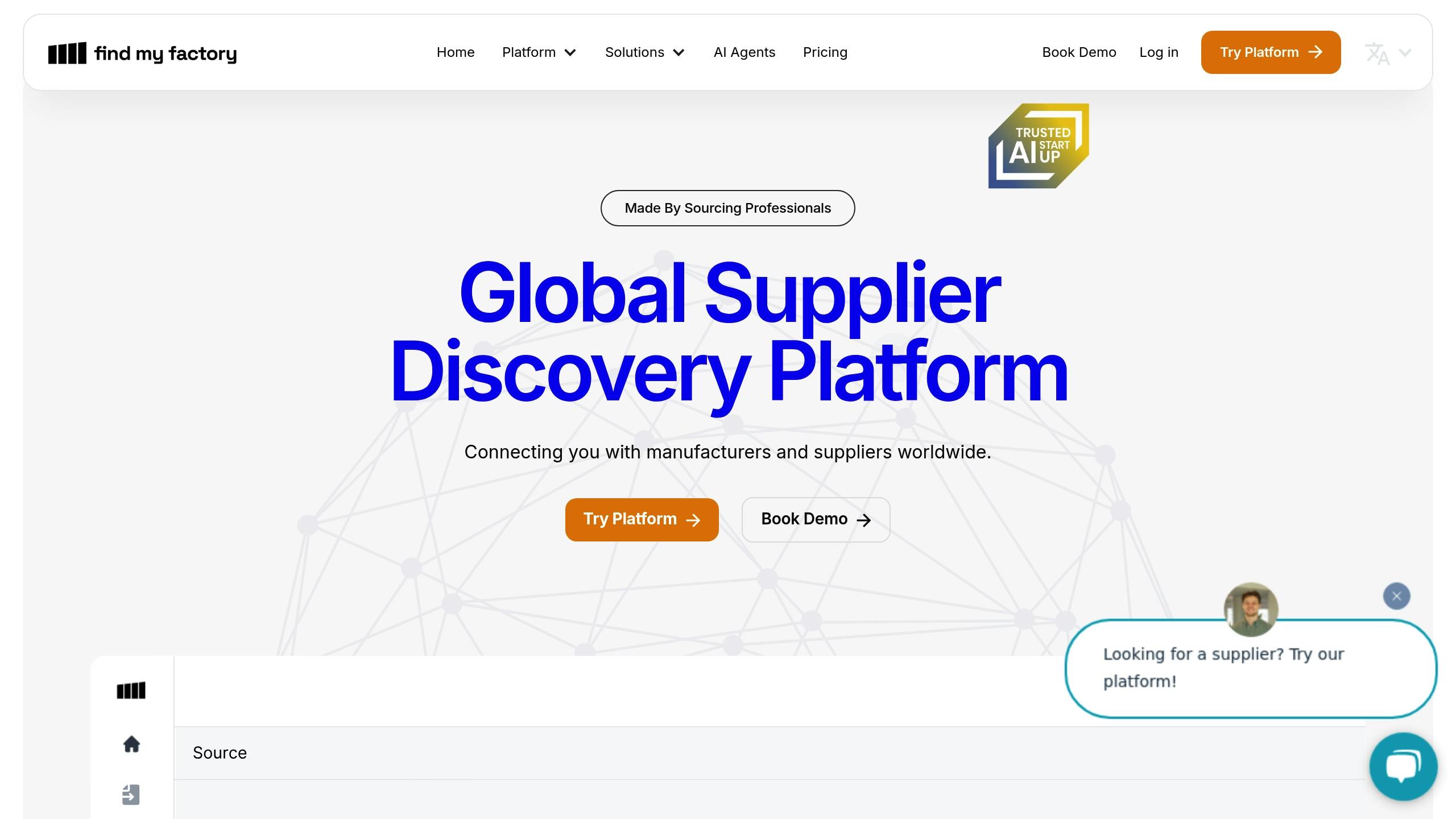Main Pages
AboutPricingSecurityCareerCustomersContactBlogFeatures
Monitor & EnrichDiscover & SourceRFI & EngageOur Socials
LinkedinLegal
Terms of UseMay 9, 2025
Explore how AI enhances Key Risk Indicator development in supply chains, improving risk monitoring and decision-making processes.
Articles

AI is transforming how businesses monitor and manage risks in supply chains. Key Risk Indicators (KRIs) - metrics to predict and track risks - are now smarter and faster with AI tools. Here's what you need to know:
Example Tool: Find My Factory uses AI to analyze 8 million suppliers, offering enriched data, automated alerts, and collaboration tools for $2,990/month (Team plan).
AI tools are reshaping supply chain risk management by making processes faster, smarter, and more reliable.
Artificial Intelligence is reshaping Key Risk Indicator (KRI) development by processing large volumes of data quickly and accurately. This shift is changing how risks are identified, analyzed, and managed, offering new methods, tools, and system integrations that enhance risk management strategies.
AI leverages several techniques to improve supply chain risk analysis:
Using AI in KRI development brings a range of benefits that enhance risk management processes. AI-driven platforms can process data from millions of suppliers, providing insights that manual methods simply cannot match. Additionally, AI-powered search tools speed up the evaluation of global suppliers.
Some key benefits include:
Modern AI platforms incorporate several critical components to support effective KRI development:
Platforms like Find My Factory demonstrate the practical value of these systems by offering tailored sourcing solutions and efficient supplier matching, significantly improving supply chain risk management.
AI tools bring together advanced analytics and user-friendly interfaces to improve Key Risk Indicator (KRI) development. These tools work alongside previously discussed AI methods, offering targeted features for more accurate risk monitoring.
Machine learning platforms analyze large volumes of supply chain data to detect patterns and anticipate risks. By using both historical and real-time data, they provide early warnings to prevent disruptions. Key features include:
Visualization tools simplify complex risk data, turning it into actionable insights through intuitive dashboards. These tools are essential for effective KRI monitoring and include:

Find My Factory is a standout platform, combining supplier discovery with risk assessment. Its global database and integrated features make it a go-to tool for managing supplier risks.
FeatureKRI Monitoring BenefitAI-Enhanced SearchQuickly identifies supplier-related risks.Data EnrichmentOffers detailed insights into risk factors.Collaboration ToolsEnables team-based risk evaluations.Stakeholder ReportsGenerates automated, ready-to-share reports.
The platform caters to different needs with flexible pricing options. For example, the Team plan costs $2,990 per month and supports advanced collaboration for up to five users. Enterprise-level solutions are also available for larger operations. With Zapier integrations and 24/7 customer support, Find My Factory ensures smooth risk monitoring within your existing systems.
To set up AI tools for KRI monitoring, align the chosen solutions with your organization’s specific needs. Cloud-based platforms can make this process easier. For example, Find My Factory simplifies onboarding with steps like:
Maintaining high-quality and consistent data is critical for effective KRI monitoring. Protecting sensitive supplier information and ensuring smooth system integration should be top priorities. A practical approach could include:
Data Management AreaKey FocusBest PracticesData SecuritySafeguard sensitive dataUse strong access controls and encryption.Data IntegrationEnsure connectivityUse tools like Zapier to link AI with existing systems.
Following these practices can help ensure the setup process is reliable and secure.
Challenges might arise when connecting new AI tools to older systems. Tools like Zapier can help bridge these compatibility issues by ensuring smooth data transfer. Addressing potential conflicts early through clear communication and strict adherence to setup guidelines can prevent disruptions in monitoring.
AI is transforming how risks are managed in supply chains, offering tools that make Key Risk Indicator (KRI) development sharper and more practical. A great example is Find My Factory, which simplifies supplier identification and risk analysis by processing data from 8 million suppliers worldwide using AI. Techniques like natural language processing, predictive analytics, and AI-powered data enrichment are paving the way for even more accurate risk assessments.
While these advancements are reshaping the field, they also introduce new complexities in ethics and compliance.
As AI becomes a core part of supply chain risk management, companies face the challenge of balancing automation with accountability and transparency. To address this, it’s essential to implement strong security protocols, maintain clear documentation, and ensure tools are regularly updated to align with changing regulations.
Key focus areas include:
AI tools are reshaping how Key Risk Indicators (KRIs) are developed, making the process faster and more efficient. Platforms like Find My Factory demonstrate how AI can handle large supplier datasets with ease, showcasing just how impactful these advancements are.
Here are three key ways AI is changing KRI development:
Faster Data Processing: AI simplifies supplier discovery and risk evaluation by replacing tedious manual searches with automated, data-driven methods. This allows teams to make quicker, well-informed decisions.
Better Collaboration: AI-based platforms improve teamwork on sourcing projects. They help organizations compile supplier lists and share insights, making workflows smoother and strengthening supply chain operations.
Smarter Decision-Making: AI enhances data analysis, enabling businesses to create KRIs that align closely with their specific risk management goals. Customizing sourcing criteria and aligning them with supplier categories has become a game-changer for managing supply chain risks.
As AI continues to advance, its role in KRI development will only grow. To stay ahead, businesses must integrate these tools effectively while maintaining ethical data practices. Leveraging AI for KRI development can help ensure a stronger, more resilient supply chain.
Insights & Ideas